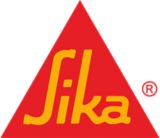Corrosion is one of the most significant threats to the longevity and safety of concrete structures. As the steel reinforcement within concrete deteriorates over time, even the most robust buildings and infrastructure can experience cracking, spalling, and structural weakening. Understanding why corrosion occurs—and how to manage it effectively—is essential for protecting these vital assets, extending their service life, and safeguarding the people who rely on them.
Sika’s Active Corrosion Inhibitors offer a proactive approach to protecting reinforced concrete. By penetrating the concrete and forming a protective layer around the steel, these inhibitors slow or stop corrosion before it causes damage.
Want to know more about Active Corrosion Inhibitors?
Why corrosion matters
Concrete structures are among the largest capital assets in our built environment - from car parks, bridges and balconies to industrial plants and marine facilities. Over time, the steel reinforcement inside concrete is at risk of corrosion. This can lead to cracking, spalling, structural weakness and ultimately failure if left unmanaged. A proactive corrosion-management strategy is therefore essential for preserving asset integrity, reducing lifecycle cost and ensuring safety.
What we mean by “active corrosion inhibitors”
Active corrosion inhibitors are chemical treatments applied to reinforced concrete that reduce the corrosion rate of steel reinforcement. These products work within the concrete matrix - either impregnating through the concrete from the surface to reach and protect the reinforcement, or by continuously releasing corrosion-inhibiting vapours within the concrete - to protect steel without full replacement.
Concrete Corrosion Inhibitor Products
When to use each
New construction, or for repairing concrete with
acceptable cover, sound reinforcement, but with a risk of corrosion (carbonation) → choose FerroGard-903
Reinforcement is difficult to access, removal or surface preparation is impractical, or concrete is coated → choose Margel VPI-580
New construction and repair, horizontal applications, supporting elements, façades and balconies, marine and other high humidity applications, and where de-icing salts are present and corrosion is likely (carbonation and chloride attack) → choose Sikagard-8500 CI
Benefits of our active inhibitor systems
Helps prevent or reduce further steel corrosion without full replacement of reinforcement.
Minimises disruption: less invasive than large-scale concrete removal or full cathodic systems.
Extends service life, contributing to sustainability and reduced whole-life cost.
Suitable for bridges, car parks, marine structures, industrial concrete, balconies — wherever reinforced concrete is exposed to aggressive environments.
Can be used with all types of steel reinforced concrete, including cast in situ, precast, post tensioned, pre-stressed and GFRC.
How it fits within a holistic corrosion management strategy
Active inhibitors represent one important pillar of a full corrosion management approach. They should be used in conjunction with:
- A detailed corrosion survey and diagnostics (chloride content, carbonation depth, corrosion rate, etc.)
- Concrete surface preparation and repair of damaged cover.
- Appropriate concrete protection and coatings.
- Monitoring systems & review of service environment.
- Where required, cathodic protection or sacrificial anode systems.
Together the strategy becomes a holistic approach to corrosion management of our ageing concrete assets — Total Corrosion Management.

